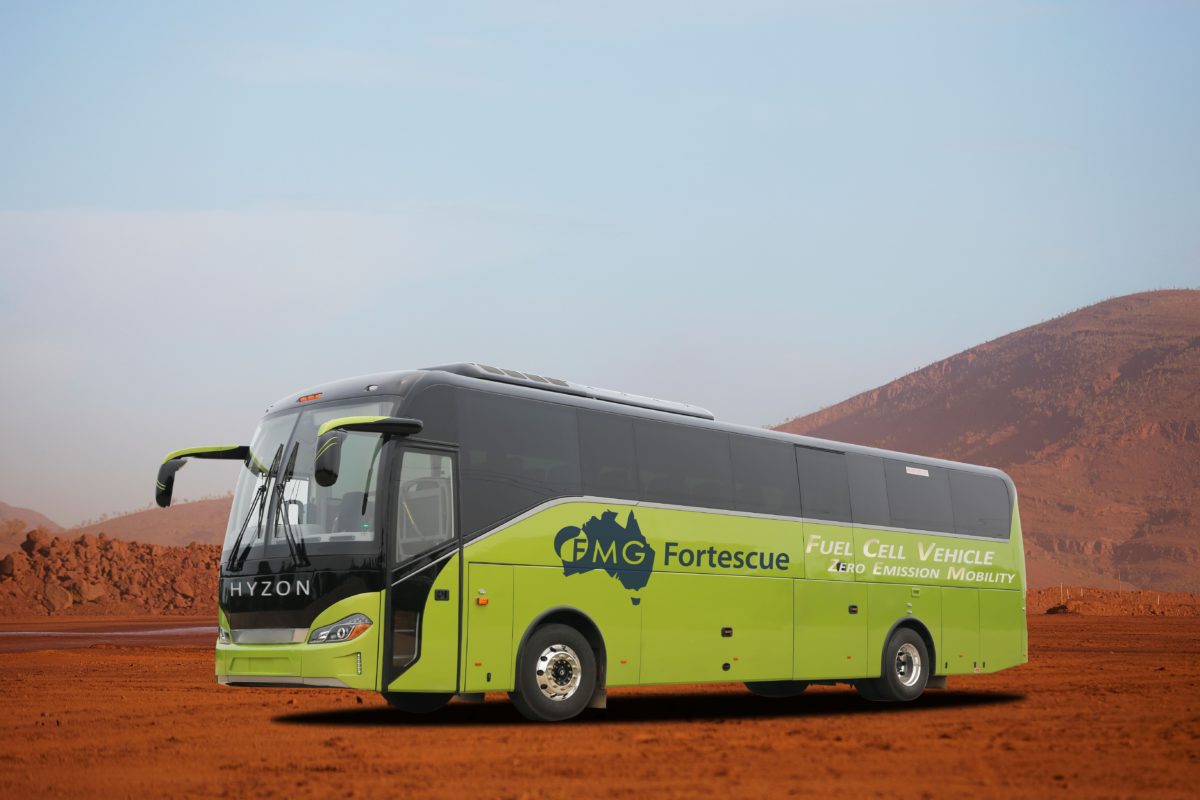Fortescue chairman Andrew Forrest unveiled the strategy at the company’s annual shareholder meeting this week, declaring the mining giant had already committed $1 billion out to 2023 for the project.
Speaking via video link from Paraguay on Wednesday, Forrest said the company’s Fortescue Future Industries (FFI) arm would challenge global energy majors such as Chevron and BP as an energy producer.
“We are building a portfolio of renewable assets, energy-producing assets around the world,” he said.
FFI will finance, develop and operate renewable energy projects including green hydrogen and ammonia plants.
Fortescue executives have already visited 23 countries to shortlist partners and plan to visit 24 more as they look to secure deals and Forrest said preliminary deals have already been signed in Papua New Guinea, Indonesia and Africa.
“As each project rolls in we will be considering them on their merit and where we establish markets as we did for Fortescue, where we establish independent financing secured only against the assets, exactly like we did with Fortescue, then we will go ahead and finance and develop those projects,” he said.
“With scale and innovation, we will be able to ramp up supply of green hydrogen and green ammonia to deliver low-cost energy reliably at industrial scale to customers all over the world.”
Forrest said the company’s initial target would be to have 235 GW of installed energy capacity – by comparison, BP plans to produce 50 GW of renewable energy by 2030 – but did not provide a timeline.
“After scientific and personal analysis of the renewable energy resources of our little planet I can assure you that there is more than enough renewable energy to sustainably and economically supply every person on this planet from this time forth,” he said.
“It is our job to respectfully use these readily available renewable resources and supply the world’s fuel and power at sufficient scale to satisfy the need for abundant, cheap, zero pollutant energy.”
Fortescue has committed its own operations to be carbon neutral by 2040 and has invested heavily in the transition to renewables, including the $700m Pilbara energy project which includes 150 MW of solar PV and large-scale battery storage.
The company is also moving into green hydrogen in its mining operations with plans to replace its fleet of diesel-fuelled vehicles with hydrogen-fuelled alternatives.
Forrest said he wanted to put Fortescue at the forefront of the coming “stampede” into renewable and green hydrogen and ammonia production.
“We know that if we’re going to meet and hit the Paris targets, we’re going to need a 70% reduction in carbon emissions,” he said.
“I see that once we can create sufficient renewable energy and renewable fuels where — like the oil and gas sector — we can guarantee reliability of supply at volume and scale, there will be a veritable stampede into renewable energy and green industries.”
While Forrest was bullish about the company’s target, Fortescue chief executive Elizabeth Gaines was more restrained, stating the company was at the “early stages” of building a business in the energy sector.
“These are ambitious targets and we are at the early stage of assessing these opportunities,” she said.
“As the chairman mentioned, any decision — and we haven’t made any capital investment decisions in those initiatives at this point in time — will be supported by detailed feasibility studies and all the rigour and discipline that Fortescue is known for in terms of delivering on major projects and delivering returns to shareholders.”
This content is protected by copyright and may not be reused. If you want to cooperate with us and would like to reuse some of our content, please contact: editors@pv-magazine.com.









1 comment
By submitting this form you agree to pv magazine using your data for the purposes of publishing your comment.
Your personal data will only be disclosed or otherwise transmitted to third parties for the purposes of spam filtering or if this is necessary for technical maintenance of the website. Any other transfer to third parties will not take place unless this is justified on the basis of applicable data protection regulations or if pv magazine is legally obliged to do so.
You may revoke this consent at any time with effect for the future, in which case your personal data will be deleted immediately. Otherwise, your data will be deleted if pv magazine has processed your request or the purpose of data storage is fulfilled.
Further information on data privacy can be found in our Data Protection Policy.